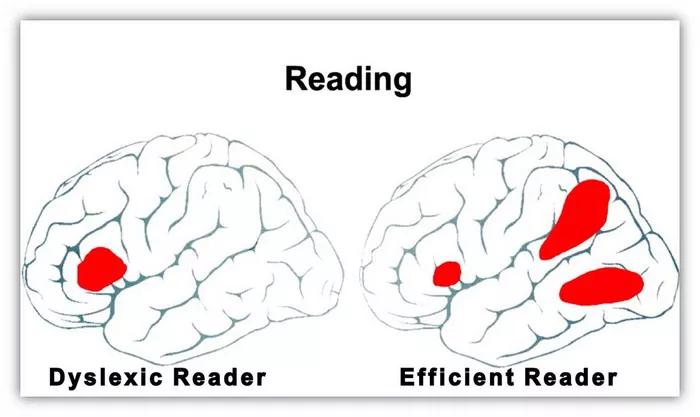Dyslexia, a common learning disorder affecting millions worldwide, profoundly impacts an individual’s ability to read and comprehend written text. While dyslexia manifests differently in each person, understanding how dyslexics read words is crucial for educators, parents, and individuals themselves. By delving into the intricacies of dyslexic reading patterns, we can foster empathy, provide effective support, and enhance literacy outcomes for those with dyslexia.
Defining Dyslexia
Dyslexia is a neurodevelopmental condition characterized by difficulties in accurate and fluent word recognition and by poor spelling and decoding abilities. It’s important to clarify that dyslexia is not a result of lack of intelligence or poor instruction, but rather a specific impairment in the brain’s ability to process language. Dyslexia exists on a spectrum, with individuals experiencing varying degrees of difficulty with reading, writing, and spelling.
The Challenge of Word Recognition
One of the hallmark challenges for dyslexics is word recognition. Unlike proficient readers who effortlessly decode words into sounds and meanings, dyslexics often struggle to make this connection. This difficulty stems from underlying differences in how the dyslexic brain processes written language. Research suggests that individuals with dyslexia may have atypical patterns of brain activation during reading tasks, particularly in areas responsible for phonological processing and visual word recognition.
Phonological Processing
Phonological processing refers to the ability to recognize and manipulate the sounds of language. For dyslexics, deficits in phonological processing can make it challenging to map letters to their corresponding sounds. This difficulty becomes apparent when dyslexics encounter unfamiliar words or irregular spellings that don’t follow typical phonetic rules. Consequently, dyslexics may rely more heavily on memorization or context clues when reading, rather than employing phonetic strategies.
Visual Word Recognition
In addition to phonological challenges, dyslexics may also struggle with visual word recognition. This aspect of reading involves quickly identifying and interpreting visual patterns of letters. While skilled readers effortlessly recognize words by their overall shape and configuration of letters, dyslexics may have difficulty discriminating between similar-looking letters or processing words in their entirety. As a result, dyslexics may experience slower reading speeds and a higher frequency of reading errors.
Compensatory Strategies
Despite these challenges, dyslexics often develop compensatory strategies to navigate the reading process. These strategies vary widely among individuals and may include:
1. Contextual Guessing: Relying on surrounding words or context to infer the meaning of unfamiliar words.
2. Word Memorization: Memorizing frequently encountered words to bypass the need for phonetic decoding.
3. Using Multisensory Approaches: Engaging multiple senses (such as sight, sound, and touch) to reinforce learning and memory.
4. Breaking Words into Parts: Breaking longer words into smaller, more manageable chunks for decoding.
5. Utilizing Assistive Technology: Leveraging tools like text-to-speech software or specialized fonts designed for dyslexic readers.
These strategies highlight the adaptive nature of the dyslexic brain and underscore the importance of providing diverse learning experiences tailored to individual needs.
Implications for Education
Understanding how dyslexics read words has significant implications for educational practices. Effective interventions for dyslexia often involve structured literacy instruction that explicitly teaches phonemic awareness, phonics, fluency, vocabulary, and comprehension skills. Additionally, educators can implement the following strategies to support dyslexic students:
1. Provide Explicit Instruction: Break down reading skills into manageable components and provide direct instruction with ample practice and reinforcement.
2. Use Multisensory Techniques: Incorporate tactile, auditory, and visual elements into lessons to engage different learning pathways.
3. Offer Assistive Technology: Introduce assistive tools and technologies that accommodate dyslexic students’ needs, such as audiobooks or speech-to-text software.
4. Encourage Self-Advocacy: Empower dyslexic students to understand their learning differences and advocate for the support they need to succeed.
By adopting these approaches, educators can create inclusive learning environments where all students, including those with dyslexia, can thrive academically.
The Role of Parental Support
Parents play a crucial role in supporting their dyslexic children’s literacy development. Here are some strategies parents can implement at home:
1. Promote a Love for Reading: Encourage reading for pleasure by providing access to engaging and age-appropriate materials that cater to your child’s interests.
2. Model Reading Behavior: Set a positive example by modeling reading habits and demonstrating how to decode words and derive meaning from text.
3. Foster a Growth Mindset: Emphasize effort, persistence, and resilience rather than focusing solely on outcomes. Celebrate small victories and provide encouragement during challenging moments.
4. Communicate with Educators: Maintain open lines of communication with your child’s teachers to collaborate on effective strategies and monitor progress.
By working in partnership with educators and leveraging the supportive home environment, parents can help their dyslexic children build confidence and competence in reading.
Conclusion
In conclusion, understanding how dyslexics read words provides valuable insights into the complex nature of dyslexia and informs effective strategies for support and intervention. While dyslexia presents unique challenges in the realm of reading, individuals with dyslexia possess strengths, resilience, and adaptive strategies that contribute to their success. By embracing a holistic approach that addresses phonological, visual, and compensatory aspects of reading, we can empower dyslexic individuals to unlock their full potential and thrive in academic and professional pursuits. Through ongoing research, advocacy, and collaboration, we can continue to advance our understanding of dyslexia and promote literacy for all.


